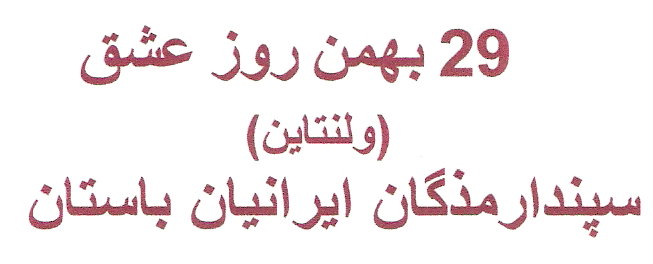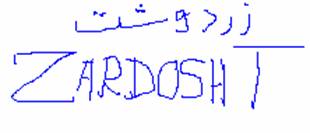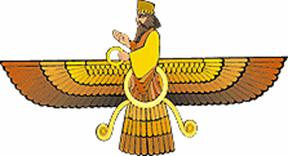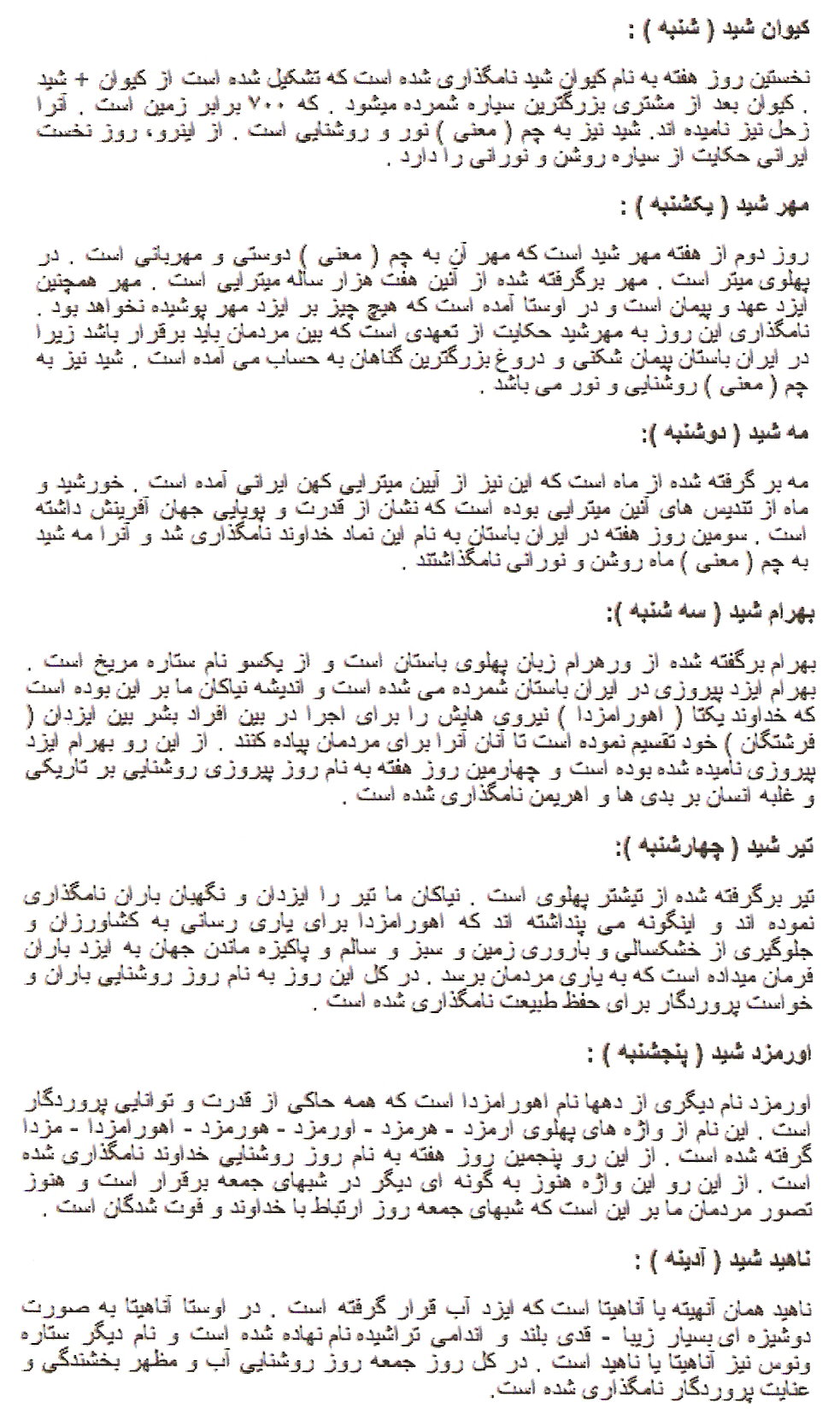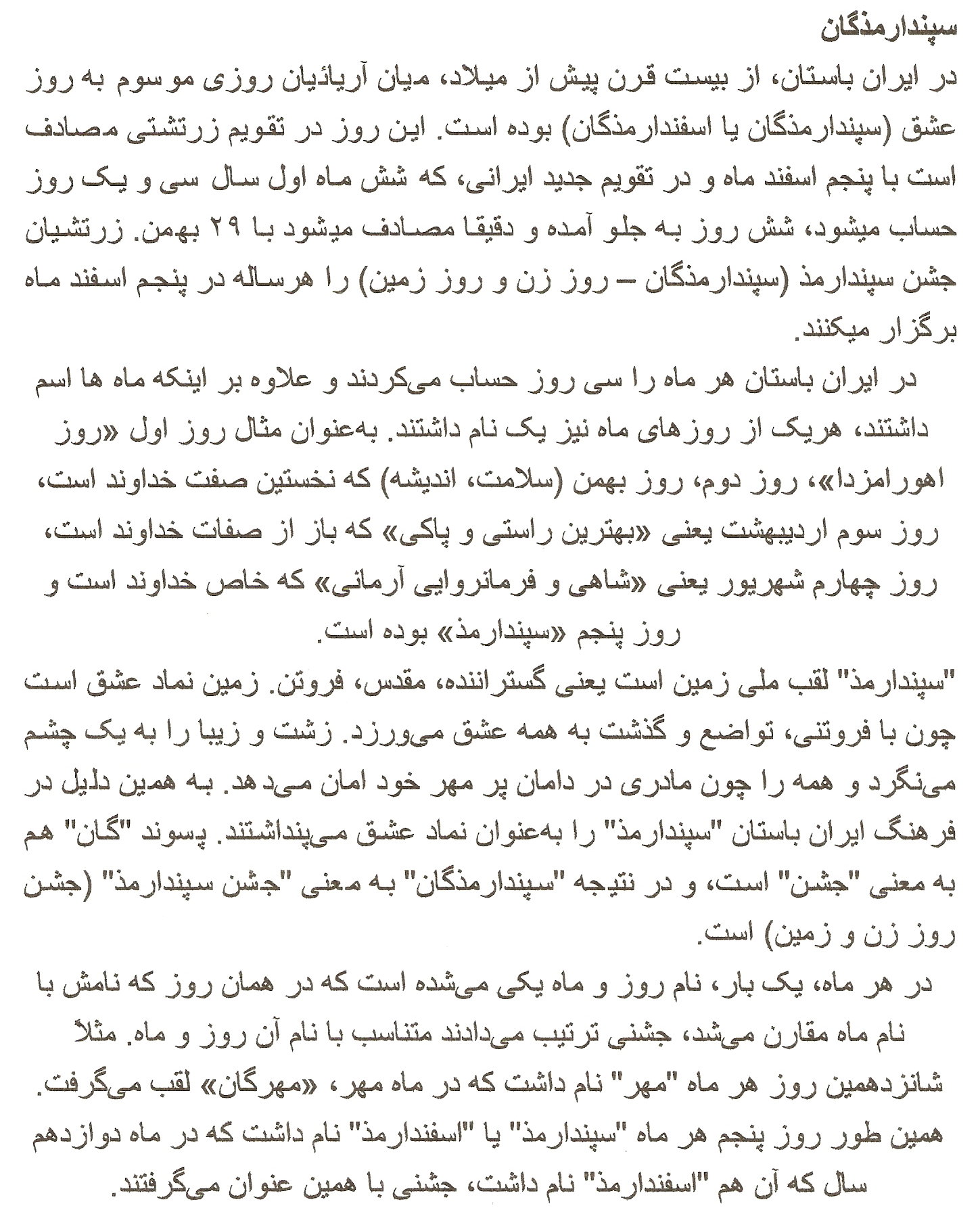 | ||||||
ZARTOSHTI FAITH
Zarathushtra
(Zartosht, Zardosht -- in Greek: Zoroaster)
By: Dr. Dariush Motamedi
The Prophet Zarathushtra was born in north-eastern ancient Persia. Historians have calculated that he may have lived around 600 BCE.
His Doctrine -- According to his doctrine, humans themselves are responsible for differentiating between GOOD/AHURA MAZDA and BAD/ANGRA MAINJU -- truth versus falsehood. This doctrine is still alive, thanks to the Zarathushtrians around the world who continue to spread the word.
I remember when we were children, my mother used to tell us that there is an angel sitting on our right and left shoulders. One is a good angel, the other bad. She told us, “You yourself have to decide which angel’s advice to follow.”
Despite Arabian repression, many people did not forget the Zarathushtrian ideals and passed them on to their children.
This experience -- not any utopian unreal religious doctrine – has influenced my entire life. It is something that I have believed in and never regretted. Of course, in my case, sometimes Angra Mainju got the upper hand, but can anyone claim he or she has always acted rightfully?
I feel that the Zarathushtrian roots are very much alive and well genetically in me and in other Persians.
Zarathushtrianism /Zoroastrianism
Compiled by: Mahin Motamedi
Our ancestors were Zarathushtrians (Zartoshti, Zardoshti -- in Greek: Zoroastrian) and members of the Indo-European family known as Aryans. They believed in the teachings of Zarathushtra (Zartosht, Zardosht -- in Greek: Zoroaster)
Zarathushtra was the first Aryan prophet and considered by many religious historian as the world’s first prophet ever to preach a monotheistic faith. It is believed that he was born on the 6th Day of the Persian month Farvardin (March 26th) about 600 BCE, somewhere in the north-eastern part of ancient Iran, to Mother Dughdova and father Pourushasp. His holy book, called Avesta, literally means that which was unknown -- or in modern terms “Research Paper”. Zarathushtra’s name in Avestan language means Golden Camel {Zarat (zar) = Golden, Ushtra (shotor) = Camel}.
Zarathushtrians believe in two primary forces: good and evil -- all that supports and enriches life is good; all that threatens and disturbs it is bad.
Ahura Mazda (The Wise Lord = God) created all that’s good and Angra Mainyu created all that’s bad. Angra Mainyu literally means Hostile Spirit -- Ahriman in modern Persian. (The English word anger is derived from Angra.) Humans by birth belong to the kingdom of good. But Ahura Mazda has created them as free agents, endowed with the power to choose, of their own volition, between that which is right and that which is wrong. After death, depending on a person’s choices and actions, one would either reach Heaven upon crossing the Chinvato Peretu (The Sword Bridge – in Islam it became known as Saraat Bridge – recognized by Iranian Moslems as Pol-e-Saraat); or fall from the bridge and end up in the abode of the evil one (Devil’s Hell).
In the final days, there would be a battle between good and evil, evil would be vanquished and the world would be purified. Ahura Mazda would then judge the world, resurrecting the dead and His Kingdom would be established on earth.
Zarathushtra's songs are called Gatha and are written in an ancient Avestan dialect, which is a sister language to Sanskrit (of India), Greek and Latin, because in those days Persians and Ancient Indians, Greeks and Europeans were collectively Indo-European peoples.
Although proud to be Aryans, Zarathushtrians also believe that all races in the world are created by Ahura Mazada (God) and are equal. Persian King Khushru (Cyrus the Great, Kooros, Koorosh) rebuilt the temple of the Jews after freeing the Jewish people from Babylon. For this, he is still fondly remembered by Jews -- he is called “Koresh the Anointed of the Lord" and Jewish people celebrate that act of the true Aryans in a festival. Many Jews then stayed in Iran as equal subjects under Cyrus the Great and his successors King Darayus (Dariush the Great, Darius) and other Persian kings.
Zarathushtrian and Aryan ideas thrived in Iran until the Arab invasion in the 7th Century AD. After the conquest and destruction of the Persian Empire, the invaders forced Islam and the Arabic language upon the people.
However, a large group of Zarathushtrians fled to India where they now live, are known as Parsees (Persians), and practice their religion. And, despite the Arabs’ efforts, the religion has also survived in parts of Iran and many parts of the world. In fact, many Jewish and Christian concepts were derived from Zarathushtrian and Ayran ideas and beliefs. Just compare Heaven and Hell, God and Devil (Ahriman), the coming of the Savior, the Resurrection of the dead (Rastakhiz), and the final battle between good and evil leading to the final defeat of evil. These beliefs filtered down to Judaism during the reign of Cyrus the Great.
Today, many scholars refer to Zarathushtrianism (Zoroastrianism) as the mother faith of the world’s major three religions of Judaism, Christianity and Islam.
Everything that is created was first a Thought.
So let your Thoughts be Good.
Good Thoughts are those that are in harmony with the Wisdom in Creation.
Let your ideas be known through
Good Thoughts, Good Words and Good Deeds.
KERDAR E NEEK GOOD DEEDS
GOOD DEEDS
The 12 Persian months have their roots in the text and ancient belief system of Zarathushtrians.
Ahura Mazda (Lord of Wisdom = God), creates many forces and beings and gives them the power to help protect the material world and defeat hostile spirits. There are three groups of metaphysical beings, some more important than others. The first group is the six Amesha Spenta. With the Ahura Mazda they form the seven Holy Immortals that protect the first seven creations when the material world Gaeity (Geety in modern Persian) is created. They are the protectors of sky, waters, earth, fire, plants, animals and humans.
Six of the twelve months are in their names.
Khashtra Vairya (Shahrevar, Shahrivar) -- Protector of the sky, all stones, metals, warriors and the protector of the poor and the weak -- means the desirable dominion (Keshvar e Arezoo Shodeh). Shahr is city or land and Var means desirable.
Asha Vahishta (Ordibehesht) -- Protector of fire and noontime heat -- means the ultimate righteousness (Behtarin Rasti). Asha has many meanings; among them are righteousness, law, purity and sacredness (Asha Zardosht).
Vohu Manah (Bahman) – Protector of animals -- means good purpose/meaning (Nik Nahad). He was a powerful symbol of creative goodness and is the divinity personifying the principle of Asha (cosmic order).
Haurvatat (Khordad) – Protector of all waters -- means health or wholeness (Rasaei and Kamali).
Spenta Armaiti (Espand, Esphand, Espandarmaz) – Female protector of mother earth -- is Holy Devotion (Foroutani e Moghadas). Espand means holy and Armaiti equals devotion and unconditional love. She is also the guardian of herdsmen and farmers. She is identified by the Greeks as Demeter and in Armenia is known as Spendaramet.
Meretat (Mordad) – Protector of all plant life -- represents immortality (Na mira). Mar (marg in modern Persian) means death. ‘A’ at the beginning of any word changes the meaning into the opposite. Mordad means death, while Amordad means immortality. Mordad is used wrongly in the modern Persian calendar and should be Amordad.
The above immortals also represent different aspects of Ahura Mazda’s attributes. One of their functions is to transfer these attributes to humans. For example Vohu Manah (Bahman) is a symbol of “Good Purpose”.
Zarathushtrians through Bahman Yasht (Prayers specific to Bahman) would discipline themselves to always mean good and have noble purposes. Ordibehesht Yasht (Yasht means prayer) will teach Zarathushtrians to follow righteousness, Ahura Mazda’s attributes.
The second group of metaphysical beings are Yazata (Eyzad, Yazdan), ‘a being worthy of worship’. There are hundreds of them. Every good force in nature and all deeds and attributes beneficial to humans have their own Eyzad: Azar, Aban, Khorshid, Mehr, Tir and Bahram are some of the best known Eyzads.
Adur (Atar, Azar) is Yazata of fire. It is one of the most important of all Eyzads. In Avestan mythology it helps legendary king Takhmorup (Tahmoureth) and Yima Khshaeta (Jamshid) to overcome many obstacles. The word has become synonymous with Atash (fire) in modern Persian.
Apas (Aban) is Avestan, Api in middle Persian and Ap in Pahlavi. It means water -- Aub, in modern Persian; aqua in English; agua in Spanish. It is the protector Eyzad of the ‘waters’ and an assistant to Spenta Armaiti (Esphand).
Mehr is Mithra in Avesta and Mitrah in Pahlavi. It is the Yazata of the covenant and loyalty. It has come from the word mei, meaning exchange. In Avesta he is the protector of ‘Payman e Dousti’ (contract of friendship). In modern Persian it means love and kindness. He is the lord of ordeal by fire -- walking through fire to prove innocence -- story of Siavash in Ferdowsi’s book Shahnameh (Epic of Kings) -- and presides over judgment of the soul at death. Ancient Greeks identified him with Apollo.
Tiri (Tishtrya,Tir) is assimilation from Babylonian Nabu, lord of scribe and of the planet Tir (Mercury) into Avestan mythology. It means the swift one (Tond o chCbok) and protects rain. In Persian-Islamic mythology Tir (Attarod in Arabic) is still the lord of scribe (Setareh Dabir).
The last group of metaphysical beings is Forouhars, the guardian angels created by Ahura Mazda to protect all living beings after the material world Gaeity (Geety) was created. Farevashi are Forouhars specific to humans and the word means guardian. The word has become synonymous with fereshteh (angel) in modern Persian.
Farvardin, is the descent of Farevashi to earth in order to visit and help their human counter parts. It also has come to means Farr e Din, glory of religious consciousness. A major festival celebrating departed souls, it was changed into celebrating guardian angels coming to earth before the start of the New Year. Farvardegan is Jashn e Farevashi (celebration of Farevashi) and it still is celebrated by Zarathushtrians today on the 19th of Farvardin (April 8th).
Dadar (Day) means creator (Afaridegar). The whole month was dedicated to Ahura Mazda. The eighth, fifteenth and twenty-third of every month were also called Day. The first day of this month was celebrated as Khoram Ruz, a feast of charity, when people were expected to be charitable and help others.
The twelve deities have survived as months of the year in modern Persian calendar. In the Islamic period the same structure was taken and transformed into the Iranian version of Shiite Islam. Twelve Imams replaced Yazata and Saoshyant; the last savoir was changed into the Time Lord, Imam Zaman. However the meanings, the importance of following and practicing divine attributes as part of the monthly rituals are lost. So are the joys, monthly feasts and celebrations associated with them.
Note: In ancient Iran, names of the months also were assigned a day in each month and when the name of the month coincided with the name of the day, the occasion called for celebration. For instance, the 16th day of each month was called Mehr; therefore, the day Mehr which happens on the 16th of the month of Mehr, was an occasion for a great festival, that of Mehregan. Tirgan or Tirazheh occurred on the day Tir of the month of the same name.
The
Persian
Calendar
Days of the Week
Saturday-Sunday:
1 - Kayvan Sheed
2 - Mehr Sheed
3 - Meh Sheed
4 - Bahram Sheed
5 - Tir Sheed
6 - Oormazd Sheed
7 - Nahid Sheed
 | ||||||
